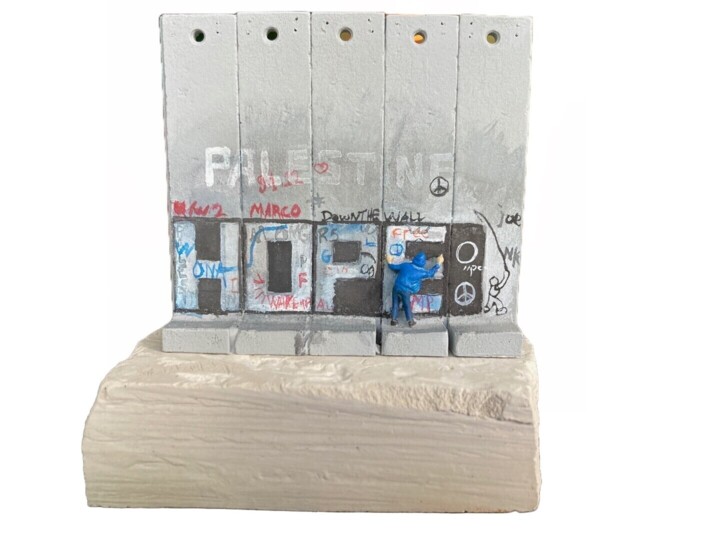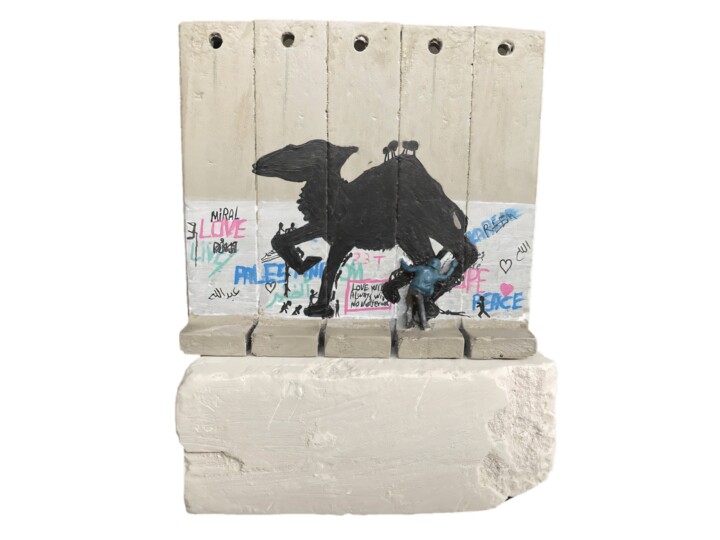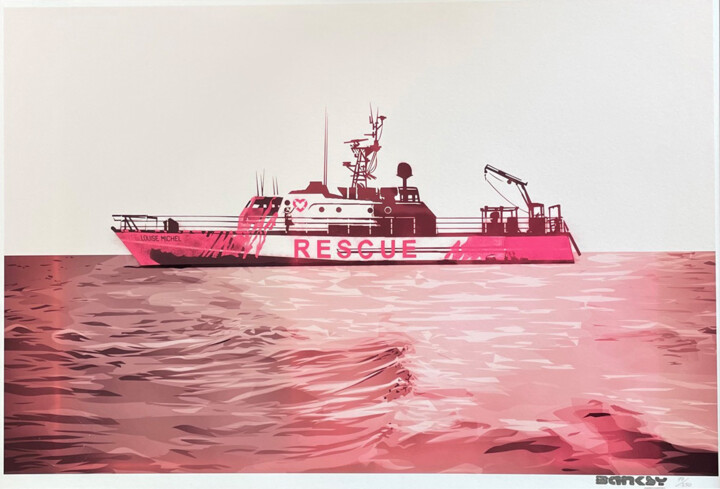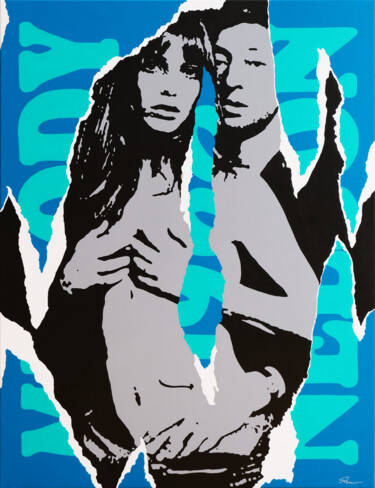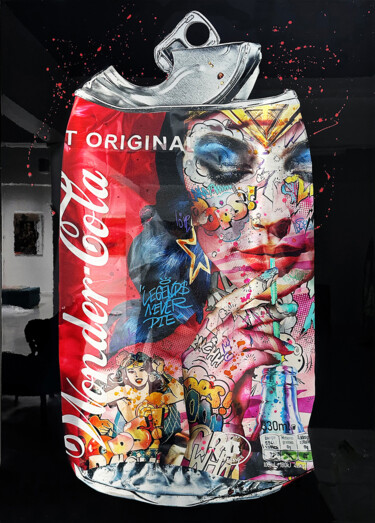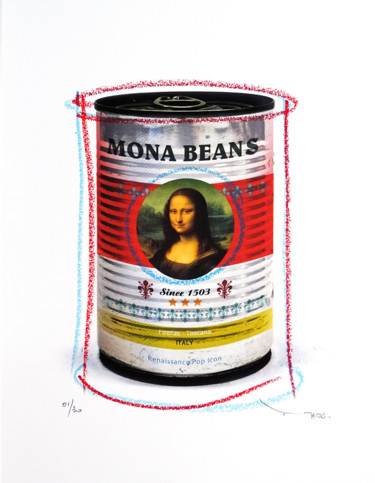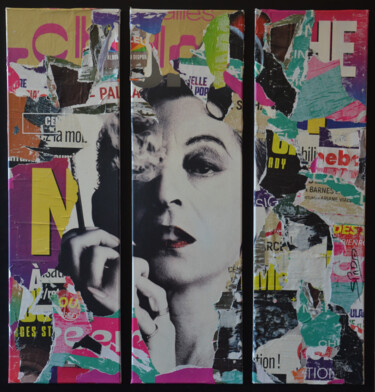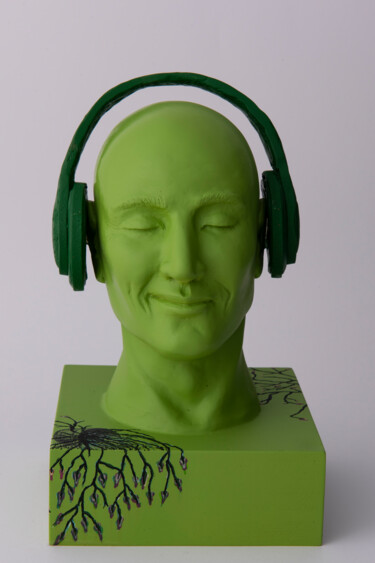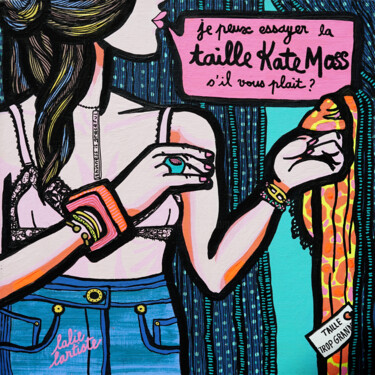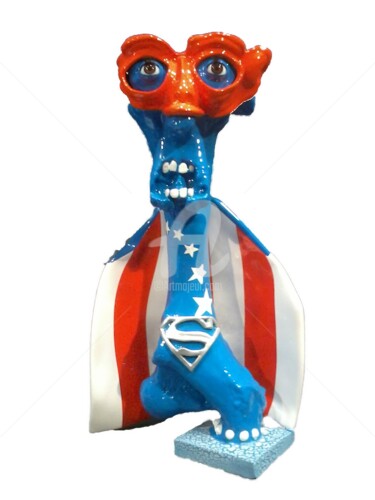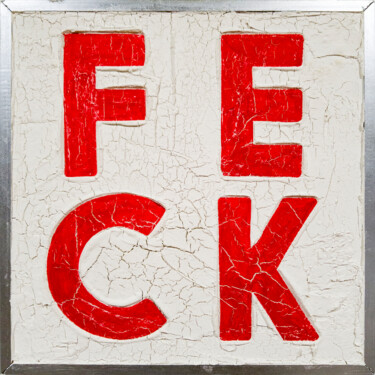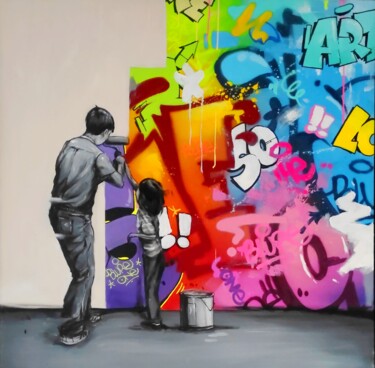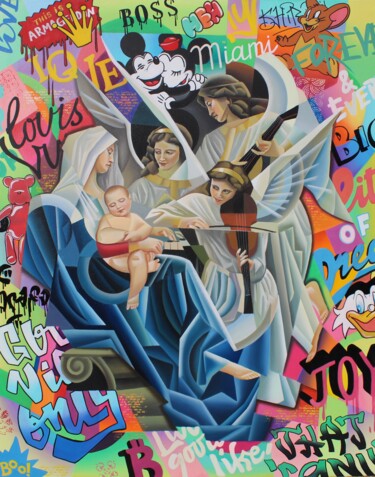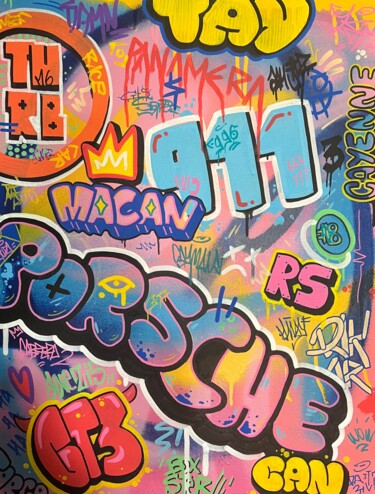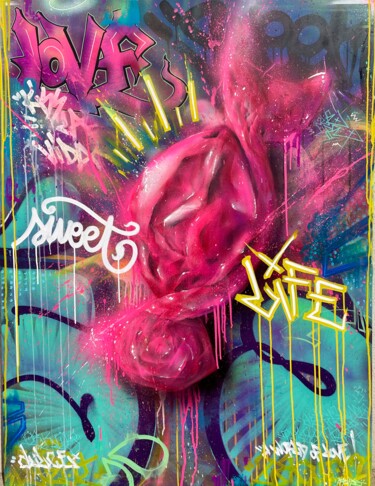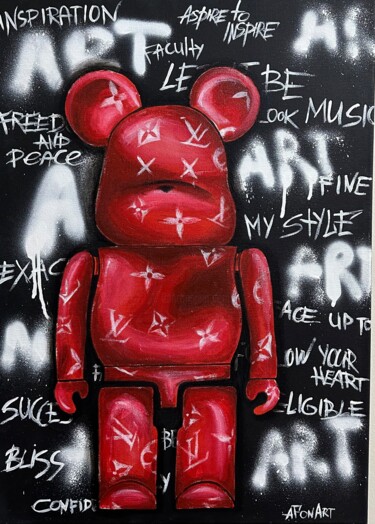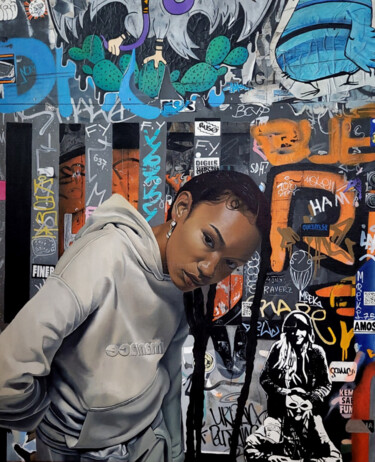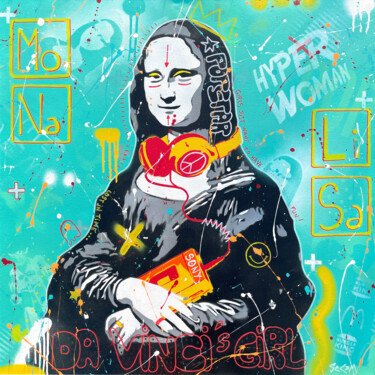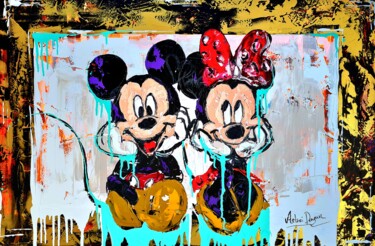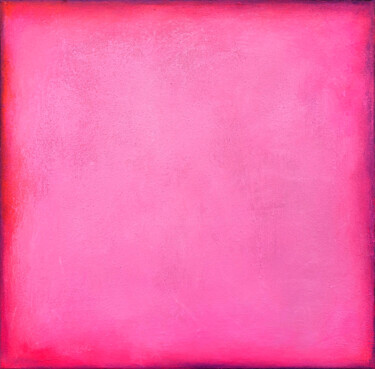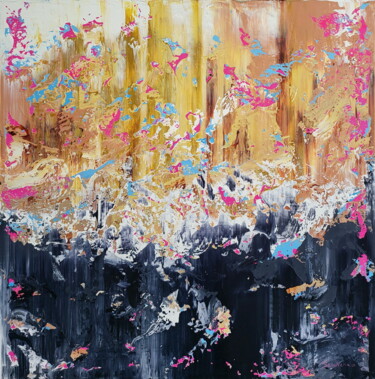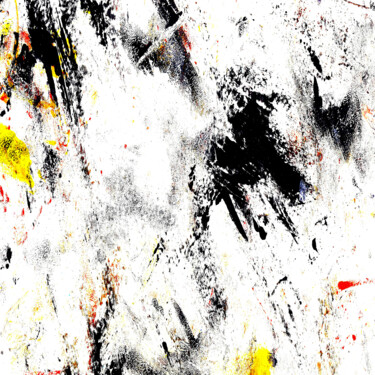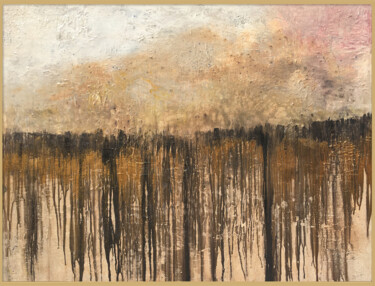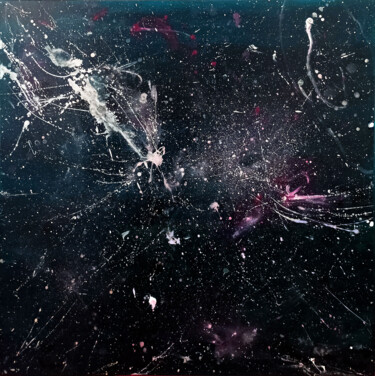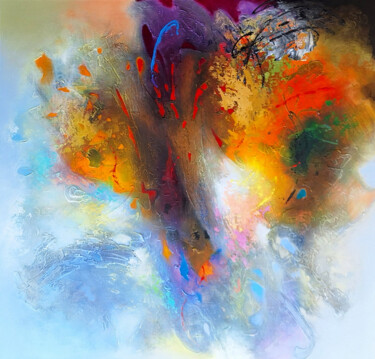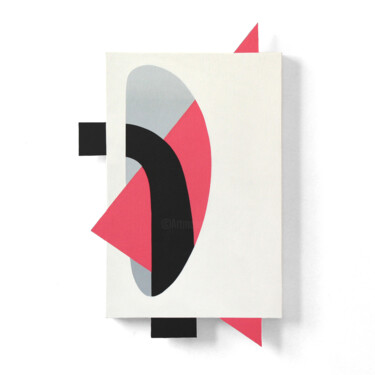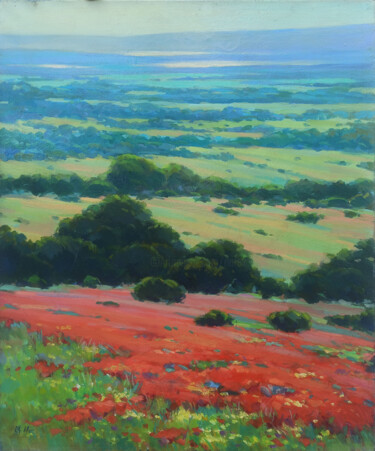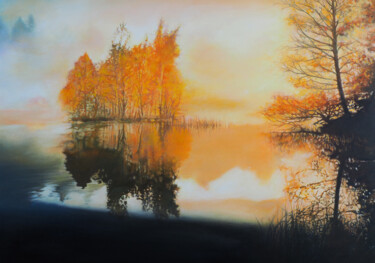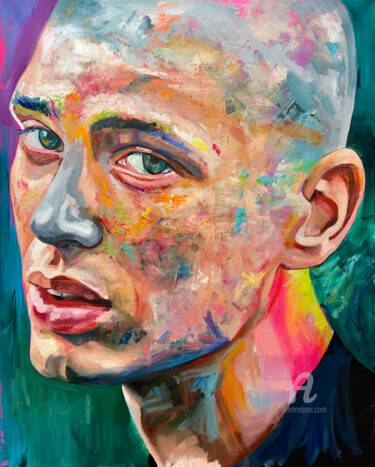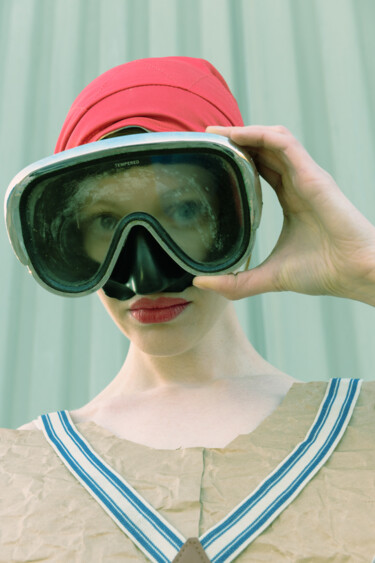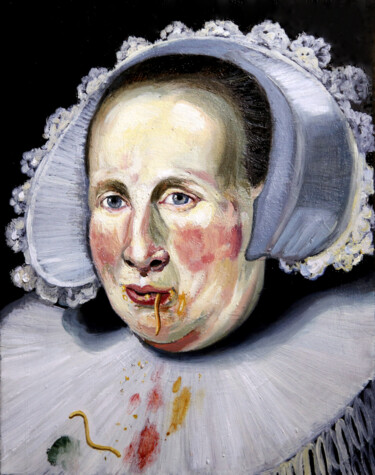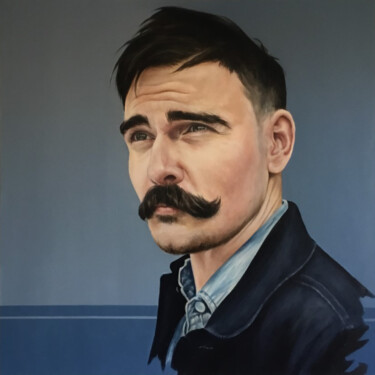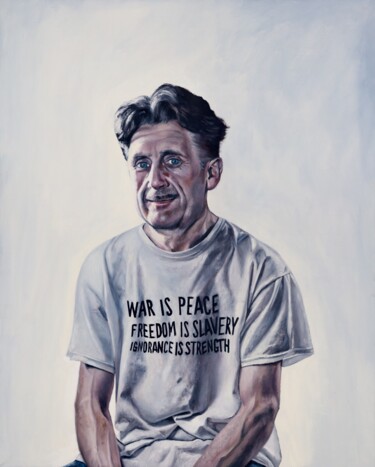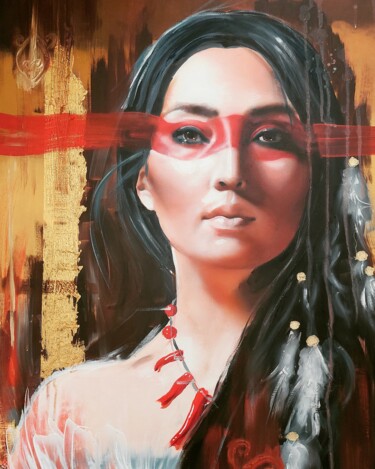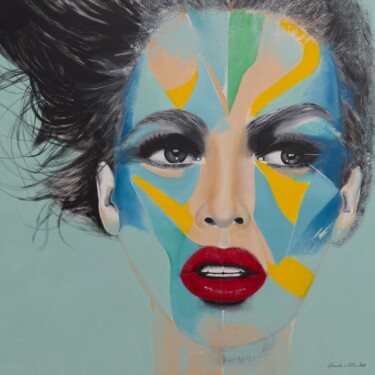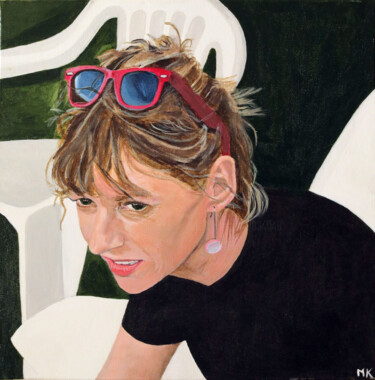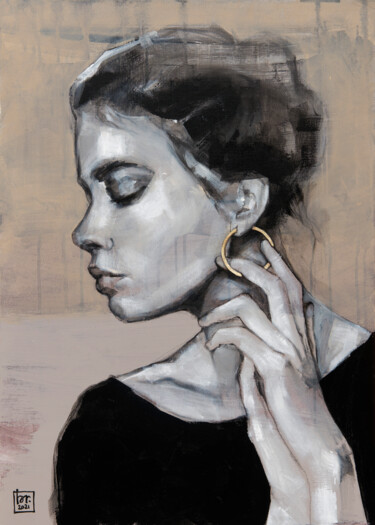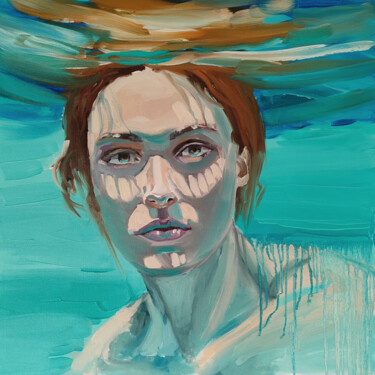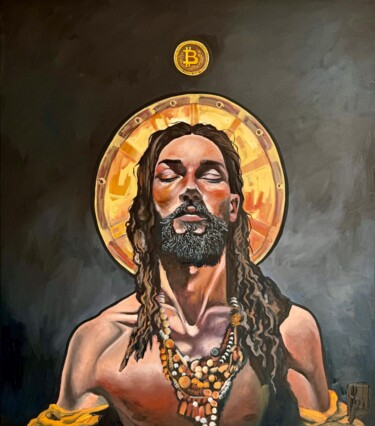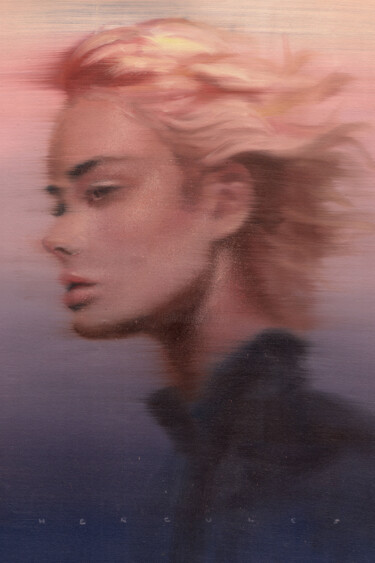 SPADE (2024) Painting by Francesco D'Adamo
SPADE (2024) Painting by Francesco D'Adamo
The most popular styles and genres on Artmajeur are: Pop art, Street Art, Abstract art, portraiture, and landscape. Do you want to know why most collectors choose these trends or subjects? The answer lies in the same interpretation of the history of art, which will be illustrated by choosing five themed works, created by Artmajeur painters. These will be described and analyzed, until we arrive at the reason why they are extremely popular. Let's start by following the announced order, dedicating ourselves to a Pop painting, and then continuing with the rest...
Pop Art
 RECYCLED LENIN #10 (2024) Painting by Oleksandr Balbyshev
RECYCLED LENIN #10 (2024) Painting by Oleksandr Balbyshev
Description of the artwork: The painter and sculptor Oleksandr Balbyshev has used a Soviet-era portrait of Lenin, which he modified by painting over it. In fact, the face of the politician is recognizable only from the nose up, as the lower parts are entirely covered in orange paint. However, even the visible parts of the depicted figure have been reinterpreted, as they host colorful circles, which are arranged only where his figure is revealed. The seriousness of the subject diminishes, as the modifications appear quite vibrant, cheerful, and ironic, ready to trivialize any potential political message that the depicted figure might allude to.
Why is it Pop Art? Pop art, a movement of the late 1950s and early 1960s, is known for challenging traditional art by incorporating images from popular and mass culture into its language, such as advertising, mass media, the star system, comics, and everyday cultural objects. The goal was to blur the boundaries between "high" art and "low" culture, suggesting that there is no hierarchy and that art can draw inspiration from any source. One of the defining aspects of Pop art is its use of images of famous people, which were transformed into iconic figures, idol-like subjects capable of reflecting the movement's fascination with fame, consumerism, and personality cult. Andy Warhol, perhaps the most famous artist associated with this aspect of Pop art, is known for his silkscreen paintings of famous personalities, including Marilyn Monroe, Elvis Presley, and Elizabeth Taylor, among others. Warhol's technique involved repeating the same image multiple times, often with different color schemes, which not only emphasized the commodification of the individual but also reflected on the nature of fame and the role of the media in its creation. His approach deconstructed the concept of celebrity, presenting these figures as consumable products for the public. So, what does Oleksandr Balbyshev's Lenin have to do with this? Similar to actors and singers, pursuing the same goals, Warhol also depicted many politicians, such as Richard Nixon, Mao Zedong, John F. Kennedy, Queen Elizabeth II, and Ronald Reagan. Using media images as the basis for these portraits, Warhol highlighted the interaction between politics, media representation, and public perception. However, it is important to clarify some differences between Andy's approach and that of the Artmajeur artist. While the former proposes characters of his time to transform into myths, the latter speaks of a figure already highly celebrated. This fact means that it is no longer art that elects someone as an icon, as the depicted subject has already achieved eternal fame. Finally, despite Lenin's figure appearing compulsively in Balbyshev's artistic research, it does not allude to mechanized production, as it is rendered in clearly differentiated works, ranging from painting to sculpture, as well as from multiple unique and innovative perspectives.
Why is Pop art popular among collectors? It's quite simple: what attracts us resembles us, what we like is easily understandable to us. So it seems obvious that Pop art reflects and critiques the culture of mass consumption, media, advertising, and celebrities, which is still prevalent today. In fact, the contemporary world is literally inundated with consumer goods, brand images, and even more omnipresent media than before, so much so that social media platforms, 24-hour news cycles, and digital advertising have created an incessant flow. This flow, made up of figures and messages, is ready to evoke even more compulsively and frenetically the media images that inspired the early artists of Pop art. Another aspect of great attraction for collectors is the aesthetic of vibrant colors, bold lines, enriched by an always accessible and immediately recognizable iconography. In addition, the ironic and satirical aspect can also be mentioned, capable of providing the viewer with an interpretation of reality that remains relevant as consumerism and media contexts evolve. Finally, the view of the movement remains popular for its unchanged value within the artistic historical narrative, as Pop art was a disruptive trend that questioned what art could be about, how it could be made, and for whom.
Street Art
 RENAISSANCE 2 (2023) Painting by Kassim Baudry
RENAISSANCE 2 (2023) Painting by Kassim Baudry
Description of the artwork: Kassim Baudry prepared the background of his canvas by dyeing it black, then took a spray can to compulsively reproduce the word "ART" on it, sometimes "cut" and "reduced" to "RT". This text, in red, blue, or cream colors, is often interrupted, or rather concealed, behind the presence of an image known to us, which was created using the stencil technique. I refer to the sacred figure of the Virgin Mary, whose presence is justified in this context by the artist's words: "the work mixes religious iconography and urban art, offering a strong contrast between classicism, the serenity of the female figure, and the wild side of graffiti." Why does the Madonna, even if reinterpreted in a contemporary key, always belong to an older language? The way she presents herself on the support effectively reproduces memorable examples of art history, such as those created by Sassoferrato, Leonardo da Vinci, or Raphael. In particular, the robes with which Baudry has covered the Virgin recall the Madonna in prayer by the first painter, while the downward gaze of the woman brings to mind the Madonna of the Carnation and the Madonna of the Goldfinch by the other two masters. But why does the Virgin look down? In reality, when she is not directing her attention towards the viewer or upwards, she is entirely focused on observing her son, who, in the work of the Artmajeur artist, is absent.
Why is it Street Art? Street art is an expansive and dynamic form of art that has transformed urban landscapes worldwide. Born from the graffiti movement and gaining prominence in the late 20th century, street art encompasses a variety of techniques, mediums, and themes, often characterized by its public accessibility and involvement in social and political issues. Artists in this form of art use various techniques and materials, including spray paint, stencils, stickers, posters, and installations. These modes of execution allow for quick and often temporary creation of works, which is crucial in an urban environment constantly in flux. Street art addresses a wide range of themes, from human rights to social justice, from the environment to politics. Many works reflect current issues and seek to stimulate reflection and debate. Some artists, like Banksy, are known for their critical and satirical approach, challenging social and political norms. As just described, we recognize several aspects of Kassim Baudry's Renaissance 2 aimed at involving technical and thematic peculiarities, ranging from graffiti to the aforementioned stencils, to the Virgin Mary. It is not the first time that street art expresses itself in a religious context, as evidenced by the works scattered around Rome by Maupal, aimed at immortalizing the Pope as a superhero, or Banksy's famous nativity scene titled Scar of Bethlehem. The goal is always the same: to demonstrate how street art can serve as a platform to question and criticize religious beliefs and institutions. By appropriating religious symbols and motifs, street artists engage in a dialogue about the role of religion in contemporary society, addressing issues of power, morality, and social justice. The subversive nature of street art allows for the expression of dissenting voices and alternative perspectives, contributing to ongoing debates about faith, spirituality, and the human condition. Therefore, this context may lead us to look at Kassim Baudry's Virgin with new eyes, interpreting her as the most transgressive version of the Madonna, protector of all street artists worldwide.
Why is Street Art popular among collectors? Street art has become increasingly popular among collectors for several reasons, ranging from the rise of prominent artists like Banksy to the provocative and contemporary themes it explores. First and foremost, the emergence of famous urban artists has undoubtedly contributed to the success of street art among collectors: Banksy, with his subversive and thought-provoking works, has garnered wide acclaim, and his anonymity, combined with his bold statements on social issues, has elevated him to the status of a cultural icon. More generally speaking, street art's tendency to address current social, political, and cultural issues makes it particularly compelling, unlike traditional art forms, which can often seem too detached from contemporary realities. Themes such as social justice, environmental activism, identity politics, and urban life resonate strongly with the public, prompting collectors to seek out works that speak to their personal values and beliefs. Furthermore, the inherently rebellious and anti-institutional nature of street art adds to the allure of this artistic expression, as street artists often operate outside the confines of the traditional art world, bypassing galleries and museums to interact directly with the public in urban environments. This challenge to traditional artistic norms and institutional boundaries imbues street art with a sense of authenticity and genuineness that resonates with an ever-growing audience seeking out works that challenge the status quo.
Abstract Art
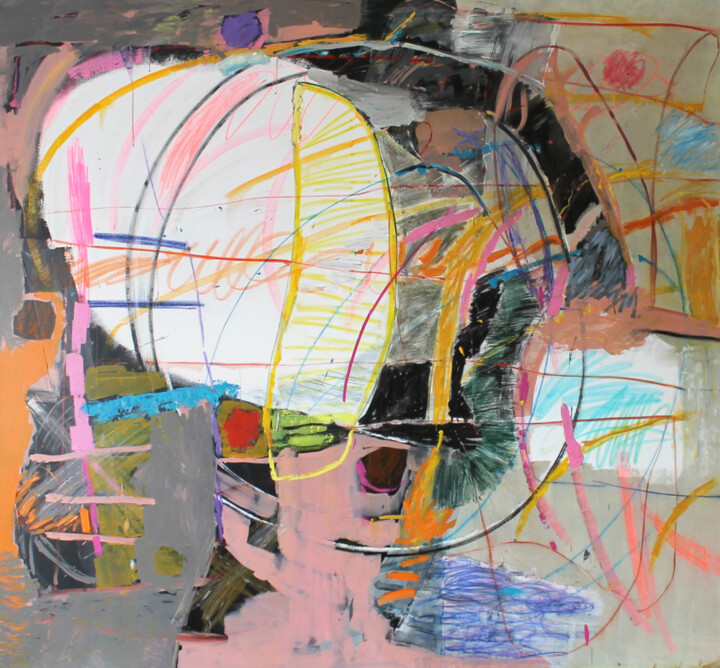 COMPOSITION 24. LIGHT (2024) Painting by Sergiy Dekalyuk
COMPOSITION 24. LIGHT (2024) Painting by Sergiy Dekalyuk
Description of the artwork: Nothing of what we see can lead us to a direct confrontation with reality, except that linked to the experience of the mark. Think of Sergiy Dekalyuk intent on painting and "scribbling" on the support of Composition 24 light, in order to mix randomness, accuracy, calculation, and spontaneity of the gesture: all this must give a coherent, harmonious, and pleasant result to the eye, without drawing inspiration from the beauty of reality. The result is a composition that reminds me at times of Basquiat's graffiti and at other times of the examples of Willem de Kooning and Franz Kline, all exponents of Abstract Expressionism.
Why is it Abstract Expressionism? Abstract Expressionism emerged in the mid-20th century to emphasize spontaneous and gestural expression and the exploration of the artist's inner psyche. At its core, Abstract Expressionism rejected the idea of art as mere representation of external reality and instead focused on communicating the artist's inner experiences, emotions, and subconscious thoughts. Painters sought to express their inner turmoil, anxiety, and existential concerns through dynamic and expressive brushwork, bold colors, and non-representational forms. The techniques employed by Abstract Expressionist artists varied widely but commonly included spontaneous brushstrokes, drips or pours of paint onto the canvas, and the use of unconventional tools to manipulate the paint. These methods allowed them to create deeply personal and emotionally charged works that emphasized the creative process as much as the final product. What is described can be found in the work of the aforementioned artist of Artmajeur, intent on working exclusively through his emotional and intuitive mark, in order to bring out his subjective experience, revealing and sharing the contents of his psyche with the viewer.
Why is Abstract Art popular among collectors? Abstract Expressionism is a form of abstract art. The latter represents a style widely appreciated by collectors because it departs from reality and is therefore outside the more susceptible temporary fashions of figurativism. Consequently, one enters a universe where colors and marks are the only elements that matter, always able to perfectly adapt to the modern and energetic décor of our contemporary homes. This freedom of interpretation and expression allows collectors to find works that integrate perfectly into their environments, adding a touch of vivacity and dynamism to domestic spaces. Moreover, abstraction offers a wide range of interpretations and meanings, allowing collectors to find paintings that fully reflect their personal tastes, stimulating their imagination and creativity. Finally, the ability of abstraction to evoke emotions and sensations without having to represent specific objects or scenes makes it attractive to those who desire artworks that can stimulate both the mind and soul, transcending superficiality.
Portraiture
 VANESSA (2023) Painting by Adeline Dutel
VANESSA (2023) Painting by Adeline Dutel
Description: Portraits can more or less be faithful representations of the model, but in any case, they strive to capture its essence, attitude, and interiority, taking shape on various supports, respecting the most varied techniques and styles. In the case of Vanessa, Dutel's work takes the form of a "realistic" portrait, whose outlines shape a female face. What goes beyond a simple figurative narrative is the support on which the woman is depicted, made of different layers of paper, appearing irregular and taking on the appearance of a multitude of closely placed roses. This choice is explained in the artist's own words on Artmajeur, who confesses: "I like to work with different mediums; each material carries its own history, depth, and uniqueness. This series of tissue paper flowers is particularly interesting for the relief it brings to the face and the different interpretations of the portrait depending on where you are to look at it."
Why are portraits popular among collectors? The genre of portraiture has consistently maintained great popularity among collectors, and this enduring appeal can be attributed to the timeless fascination with humanity itself. At the heart of the portrait is the representation of human beings - their essence, emotions, and very existence. For individuals, the human form, with its complexities and nuances, remains an endless source of intrigue and interest. Whether capturing a fleeting expression of joy, a moment of introspection, or the weight of accumulated experiences, portraits have the power to evoke empathy, connection, and contemplation in viewers. It is this deep connection to the human experience that makes the portrait eternally relevant and engaging. In fact, since ancient civilizations, artists of all epochs have sought to capture the essence of humanity through portraiture, immortalizing individuals and their stories for future generations. So we can assert that: as long as humanity exists, the art of portraiture will continue to capture and inspire, serving as a mirror of our shared existence, paying tribute to the beauty and complexity of the human spirit.
Landscape
 FALAISES DE SEVEN SISTERS, SUSSEX, UK (2023) Painting by Laurent Gilbert
FALAISES DE SEVEN SISTERS, SUSSEX, UK (2023) Painting by Laurent Gilbert
Description: Gilbert's landscape depicts a coast with high cliffs, but with strongly expressionist colors, ready to depart from reality, to tint the sky with emotions, turning it black, while the sand turns purple and the sea remains blue. Then the title of the work intervenes to reconnect us to the truth, ready to reveal what has been depicted: The Seven Sisters, a series of chalk cliffs overlooking the English Channel, located within the South Downs in East Sussex, between the towns of Seaford and Eastbourne in southern England. They are very popular, so much so that they have been used in film or television productions, such as in "The White Cliffs of Dover". Nevertheless, the cliffs have remained relatively untouched by human activity and show continuous and entirely natural erosion.
Why are landscapes popular among collectors? First of all, I think of the success of Impressionism, an extremely famous movement, especially known for its landscapes, created by painters who painted outdoors. Consequently, I can also hypothesize that many collectors appreciate the genre in question precisely because they imagine landscape painters in the likeness of the bearded Monet, all amusingly intent on capturing nature en plein air, perhaps even in the rain or storm. I add to what has just been said the oldest romantic ideals, aimed at seeking comfort in landscape art, that is, a means to put man in touch with the beauty and grandeur of nature. To all this, the desire for adventure and exploration inherent in the viewer is added, together with the desire to see familiar landscapes realized by the brush, capable of hosting memories. Thus, visual reminders of beloved places are born, also conceived to oppose the frantic and urbanized world, from which art often allows us to escape.

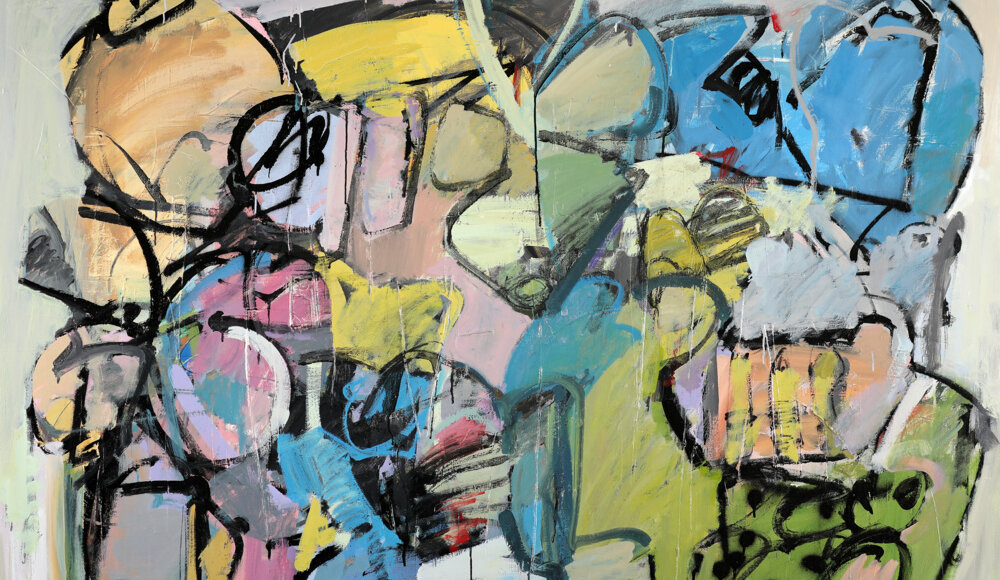
 Olimpia Gaia Martinelli
Olimpia Gaia Martinelli

